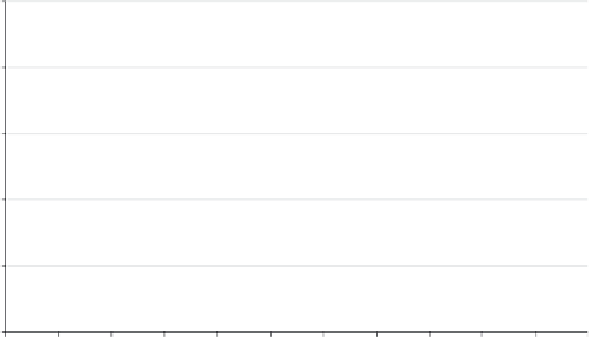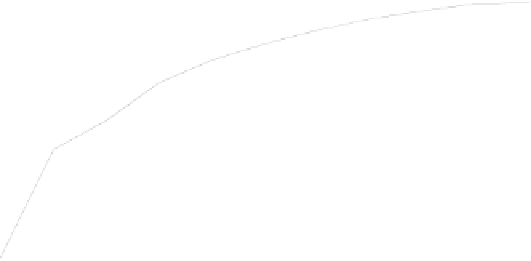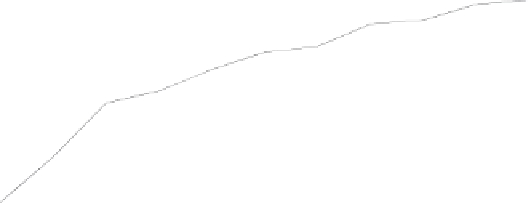Environmental Engineering Reference
In-Depth Information
100000
Europe
Far East
North America
Latin America
Africa/West Asia
Australia/NZ
10000
1000
100
10
1
1995
1996
1997
1998
1999
2000
2001
2002
2003
2004
2005
Figure 7.1.
ISO 14001-certified firms in different regions of the world, 1995-
2005 (
source
: ISO Web site).
others - different levels of specialisation, interactive use, customised
data views and easier links with other company reporting activities.
And, finally, possibilities and professionalism with respect to style, pre-
sentation, communications and formats are larger and more advanced,
increasing the public relation value of such activities.
Developments in company environmental information
Throughout the 1990s, these company environmental auditing regimes
have experienced four major developments. First, the auditing systems
have been standardised and certified. Whereas in the early 1990s vari-
ous systems of standardisation and certification were developed in par-
allel, towards the turn of the millennium the ISO 14000 series came
out as the global standard for auditing systems and their certification.
Figure
7.1
illustrates evidence of the rapid adoption of ISO 14000
certified systems in companies around the world. In the food sector,
the HACCP (Hazard Analysis of Critical Control Points), introduced
already in the late 1960s, emerged in the 1980s and 1990s as an inter-
nationally recognised and widely endorsed certification standard.
11
11
HACCP was originally introduced as a voluntary approach by private firms.
Separate production processes in a food chain can become HACCP certified,

































































































































Search WWH ::

Custom Search